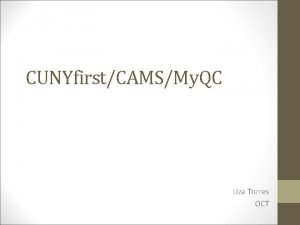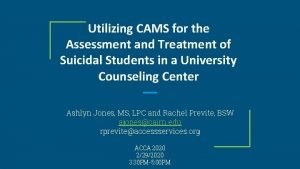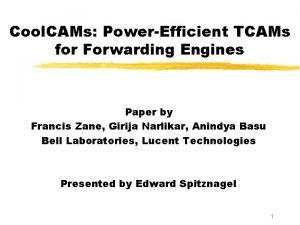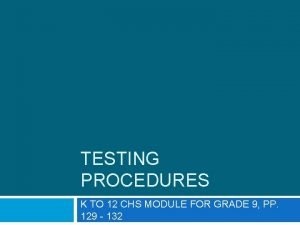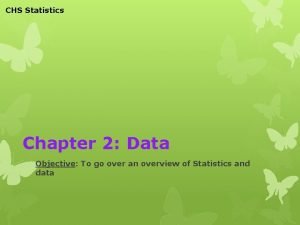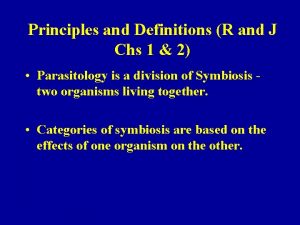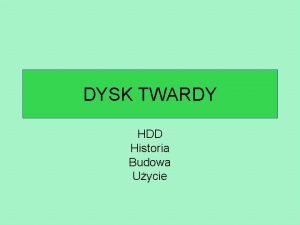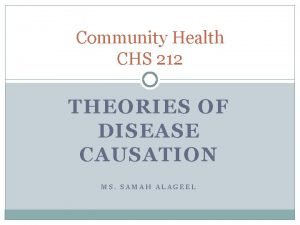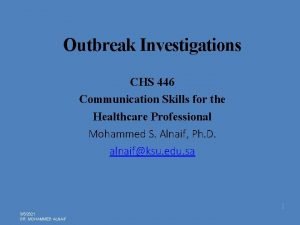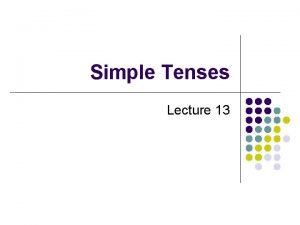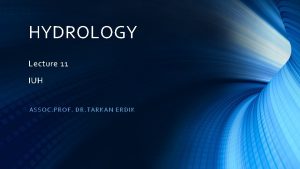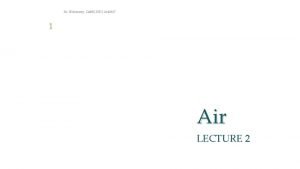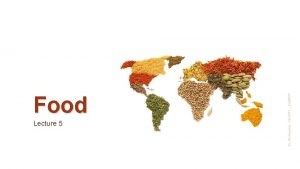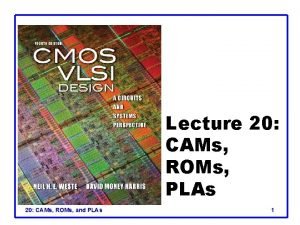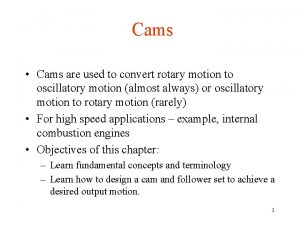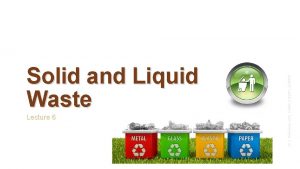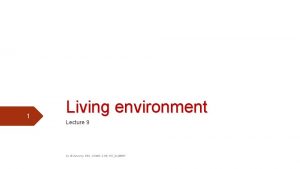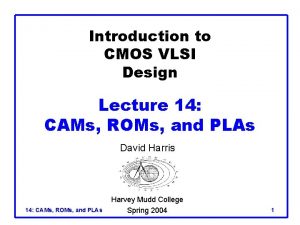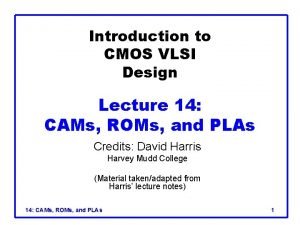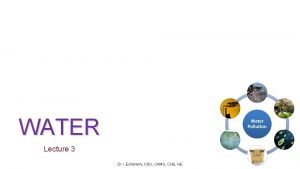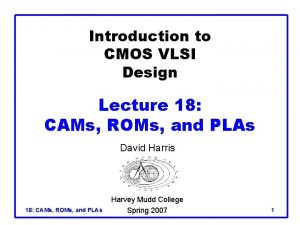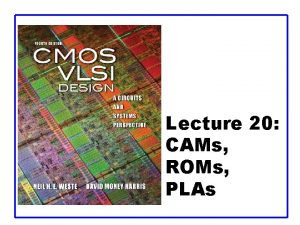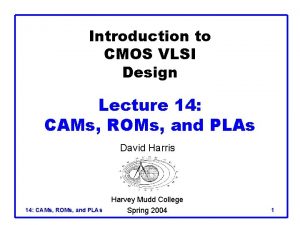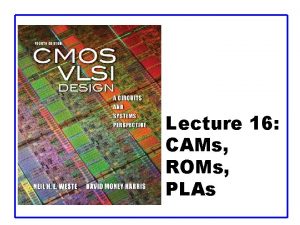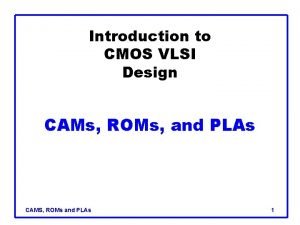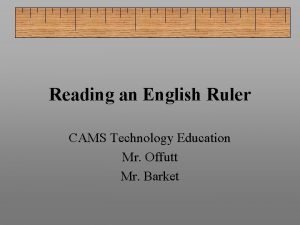Lecture 4 Dr IEcheverry HE CHS CAMS KSU2






















- Slides: 22

Lecture 4 Dr. IEcheverry, HE, CHS, CAMS, KSU_2 nd 3637 Soil 1

• Define soil contamination • Identify sources of soil contamination • Identify health implications of soil contamination Dr. IEcheverry, HE, CHS, CAMS, KSU_2 nd 3637 Objectives 2

Introduction What is soil? • It is the outermost layer of the earth’s crust. • ~1/3 of earth’s surface is covered by land. Only 10% of earth’s land is fit for agriculture. 95% of our food comes from the land. • A biologically active mixture of inorganic and organic materials, living organisms, air and water. Dr. IEcheverry, HE, CHS, CAMS, KSU_2 nd 3637 Life under your feet ! 3

Components Contents/functions Organic matter (5%) Humus – left over dark brown matter, rich in minerals such as nitrogen, that remains after all the organic matter (plant and animal) has decomposed. Provides nutrients to the soil, and helps to hold and drain water, and aerate the soil. Minerals (45%) Found in inorganic materials in sand, silt and clay – provides nutrients and texture. Air (20 -30%) • Plant and microorganisms health/respiration – biological processes by which microorganisms release additional nutrients into the soil. • In relation to the size of soil particles – important to water drainage. Water (20 -30%) Essential for living organisms and their biological processes – carries nutrients to plants. Living organisms Found on and in the soil – aerate, mix and add nutrients. Dr. IEcheverry, HE, CHS, CAMS, KSU_2 nd 3637 Components of Soil 4

Soil forming factors Climate (rain, wind, sunlight). • The material they are made of. • The organisms that live in it (including human activity). • The topography of the terrain (mountains, valleys). • Time. ISRIC. World Soil Information. http: //www. isric. org/about-soils • The components of the soil constantly change. Minerals, water, air, organic matter, and living organisms. Dr. IEcheverry, HE, CHS, CAMS, KSU_2 nd 3637 • 5

Dr. IEcheverry, HE, CHS, CAMS, KSU_2 nd 3637 http: //www. fao. org/globalsoilpartnership/news-events-archive/news/detail/en/c/284443/ 6

• 5. Filtering, buffering, degrading, immobilizing and detoxifying organic and inorganic materials that are potential pollutants. The major functions of a healthy soil include: 1. Sustaining biological activity, diversity, and productivity. 2. Regulating the flow of water and dissolved nutrients. 3. Storing and cycling nutrients and other elements. 4. Supporting plant growth, protecting air and water quality, and ensuring human and animal health. • The physical structure, chemical make-up, and biological components of the soil together determine how well a soil performs these services. Dr. IEcheverry, HE, CHS, CAMS, KSU_2 nd 3637 Soil functions 7

Dr. IEcheverry, HE, CHS, CAMS, KSU_2 nd 3637 http: //www. fao. org/globalsoilpartnership/news-events-archive/news/detail/en/c/284443/ 8

What is soil pollution? Definition: The presence of substances that alter the natural soil environment and damage living organisms. Natural or man-made. • Pollutants in the soil can Reach the ground water. Pass down to plants or animals. Bind tightly to the soil. http: //esdac. jrc. europa. eu/themes/soil-contamination • Soil pollution can lead to soil deterioration and loss of function. Pollutants type and amount. • Pollutants have to be “bioavailable” to cause harm to the following: Cells Organisms Ecosystems Dr. IEcheverry, HE, CHS, CAMS, KSU_2 nd 3637 • 9

Categories/Types of soil pollutants Chemical Insecticides, herbicides, pesticides, antibiotics, fuel spills, petroleum, solvents, heavy metals, radioactive compounds. • Biological Bacteria, viruses, fungi, protozoa, toxins. • Physical Solid waste, sewage sludge. Dr. IEcheverry, HE, CHS, CAMS, KSU_2 nd 3637 • 10

Chemical pollutants Inorganic • Fuel hydrocarbons • Nitrates • Polycyclic aromatic hydrocarbons(PAHs) • Phosphates • Heavy metals – lead, cadmium, chromium, arsenic. • Inorganic acids • Radioactive materials • Polychlorinated biphenyls (PCBs), chlorinated aromatic compounds • Detergents • Pesticides, herbicides Dr. IEcheverry, HE, CHS, CAMS, KSU_2 nd 3637 Organic 11

Common causes of soil pollution Leaking underground storage tanks. Fuel leakages and spills. 2. Emissions from fossil fuel combustion Particulate matter SO 2 , NOx, acid rain Dry and wet deposition. 3. Agricultural waste Fertilizers, pesticides and herbicides, antibiotics. Crop and animal waste. Dr. IEcheverry, HE, CHS, CAMS, KSU_2 nd 3637 1. Petrochemicals 12

4. Salinization Improper irrigation, land clearing, fertilizer use, climate, topography. 5. Radioactive fallout 6. Industrial waste. Chemicals, VOCs, persistent organic pollutants (POPs), heavy metals, radioactive waste. 7. Inadequate urban waste disposal. Leaching of waste from landfills. Direct dumping of urban waste. Sanitary sewage. Sewage treatment sludge. Dr. IEcheverry, HE, CHS, CAMS, KSU_2 nd 3637 Common causes of soil pollution 13

• Changes in chemical structure of pollutants can change their bioavailability to living organisms or how they move within the soil. Solubilized into water in the soil. Leaching through the soil into underground water. Volatilize. Bind tightly to the soil. • Chemical compounds may degrade or be transformed into compounds of different toxicity. • Soil characteristics that may affect the behavior of pollutants Soil texture, mineral content, p. H, organic matter content, moisture level, temperature, other chemicals, type of living organisms. Dr. IEcheverry, HE, CHS, CAMS, KSU_2 nd 3637 Fate of soil pollutants 14

15 Dr. IEcheverry, HE, CHS, CAMS, KSU_2 nd 3637

• Increased salinity. • Reduced soil fertility. • Increased erosion. • Deforestation. • Contamination of vegetation. • Loss of natural nutrients. • Underground and surface water contamination. • Damage natural balance of organisms living in it. • Air contamination. Release of toxic gases. Create toxic dust. • Spread of diseases. Microbes, pests. Dr. IEcheverry, HE, CHS, CAMS, KSU_2 nd 3637 Effects/consequences of soil pollution 16

Dr. IEcheverry, HE, CHS, CAMS, KSU_2 nd 3637 Pathways of exposure to soil pollutants What is contaminated land? http: //www. mfe. govt. nz/land/risks-contaminated-land/about-contaminated-land-new-zealand/what-contaminated-land 17

Dr. IEcheverry, HE, CHS, CAMS, KSU_2 nd 3637 Antibiotic use and environmental contamination 18

Consequences of soil pollution • Nutrient pollution, heavy metal contamination and acid rain alter the natural microbial composition of the soil. • Acid rain and heavy metals decrease bacteria and increase fungi in soil. • Microorganisms that metabolize nitrogen are sensitive to the presence of pesticides. Dr. IEcheverry, HE, CHS, CAMS, KSU_2 nd 3637 Microorganisms 19

Consequences of soil pollution • Exposure and uptake absorption (skin), inhalation (nose/mouth) or ingestion (mouth). Soil/dust particles, water or food (animals or plants). • Health effects Agricultural chemicals Cancer and reproductive problems. Heavy metals Neurological and developmental problems in children, kidney damage and liver toxicity. Industrial toxins Birth defects, nervous system disorders, kidney and liver diseases, leukemia. https: //www. env. go. jp/en/water/soil/contami_cm. pdf Dr. IEcheverry, HE, CHS, CAMS, KSU_2 nd 3637 Humans 20

Control of soil pollution Reduction in the use of pesticides, herbicides and fertilizers. • Reusing and recycling to reduce solid waste. • Reforestation. • Adequate waste treatment and disposal. Industrial waste Landfills Buried waste • Chemical and physical separation of the pollutants. • Using heat to remove chemicals or to destroy pathogens. • Bioremediation Using living organisms to destroy, transform, or immobilize pollutants. Microorganisms (bacteria, fungi), plants, earthworms (arthropods). Soil Contamination, Risk Assessment and Remediation Muhammad Aqeel Ashraf, Mohd. Jamil Maah and Ismail Yusoff http: //cdn. intechopen. com/pdfs-wm/46032. pdf Dr. IEcheverry, HE, CHS, CAMS, KSU_2 nd 3637 • 21

• Roosk, J. , Brookes, P. C. and Baath, E. Contrasting Soil p. H Effects on Fungal and Bacterial Growth Suggest Functional Redundancy in Carbon Mineralization. Appl Environ Microbiol. 2009 Mar; 75(6): 1589– 1596. doi: 10. 1128/AEM. 02775 -08 • USDA. NRCS. Soil Health. http: //www. nrcs. usda. gov/wps/portal/nrcs/detailfull/soils/health/biology/? cid=nrcs 142 p 2_05 3868 Accessed on 02/12/2016 • United Nations Environment Programme Division of Technology, Industry and Economics. Phytoremediation: An Environmentally Sound Technology for Pollution Prevention, Control and Remediation. Newsletter and Technical Publications. Freshwater Management Series No. 2. An Introductory Guide To Decision-Makers. • http: //www. unep. or. jp/Ietc/Publications/Freshwater/FMS 2/2. asp Chong, S. et al. How do soils breathe? http: //www. invisiblestructures. com/white_papers/sand/Breathe. pdf • Penn. State Extension. Earthworms. http: //extension. psu. edu/plants/crops/soilmanagement/soil-quality/earthworms Dr. IEcheverry, HE, CHS, CAMS, KSU_2 nd 3637 References 22
 Cuny first qc
Cuny first qc Cams suicide assessment
Cams suicide assessment Math mystery case of the graduation gremlins
Math mystery case of the graduation gremlins Matecam app
Matecam app Funky-cams
Funky-cams Lucas cams
Lucas cams Cams a
Cams a Cms.edf.school
Cms.edf.school Chs module
Chs module Chs statistics
Chs statistics Maryland integrated science assessment
Maryland integrated science assessment J'chs 1
J'chs 1 Baseball parent meeting agenda
Baseball parent meeting agenda St roberts high school
St roberts high school Lba to chs
Lba to chs Chs scaffolding
Chs scaffolding Concept of disease
Concept of disease Chs investigations
Chs investigations Chs investigations
Chs investigations Chs vs ibs
Chs vs ibs 01:640:244 lecture notes - lecture 15: plat, idah, farad
01:640:244 lecture notes - lecture 15: plat, idah, farad Lecture on tenses
Lecture on tenses Hydrology lecture
Hydrology lecture
